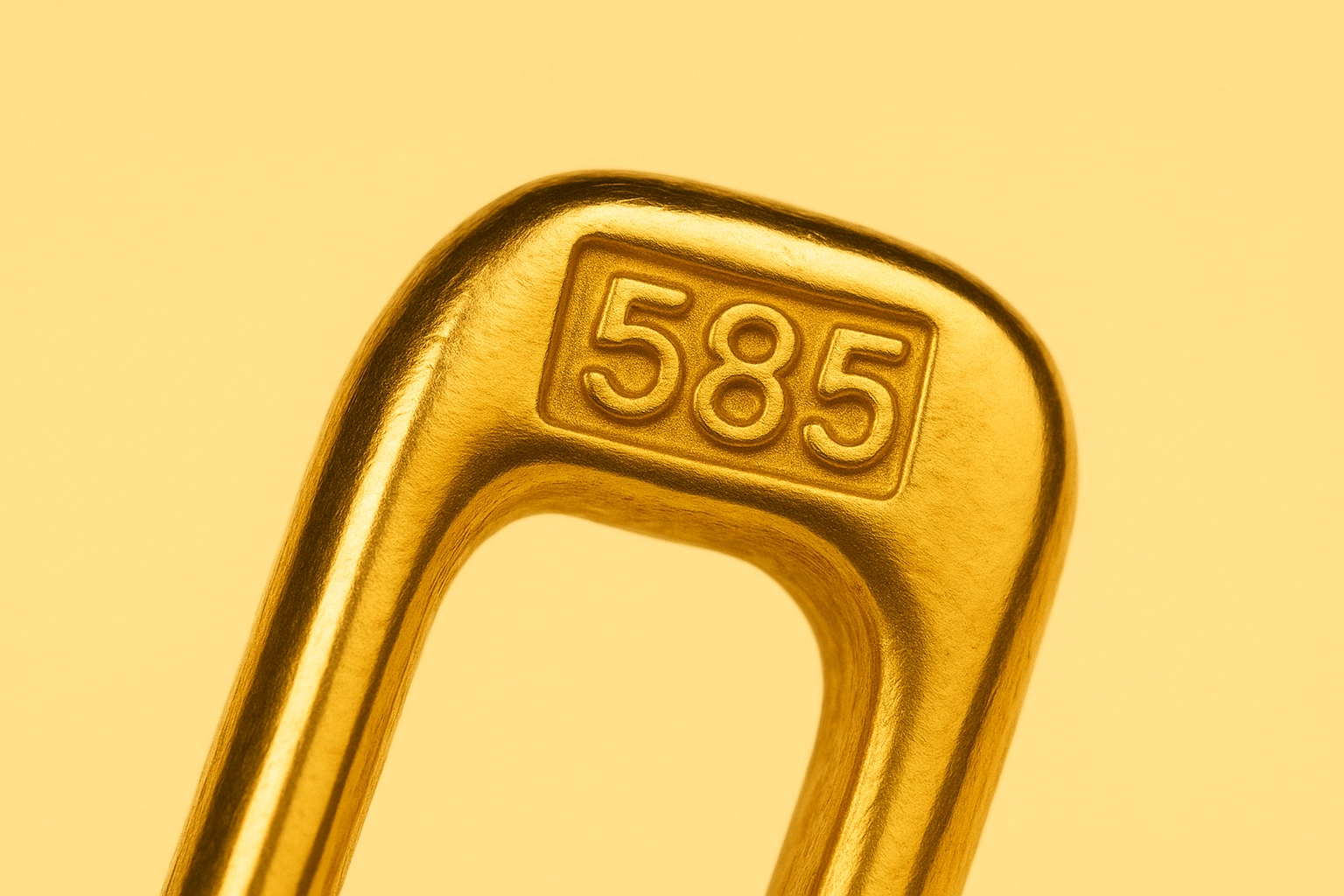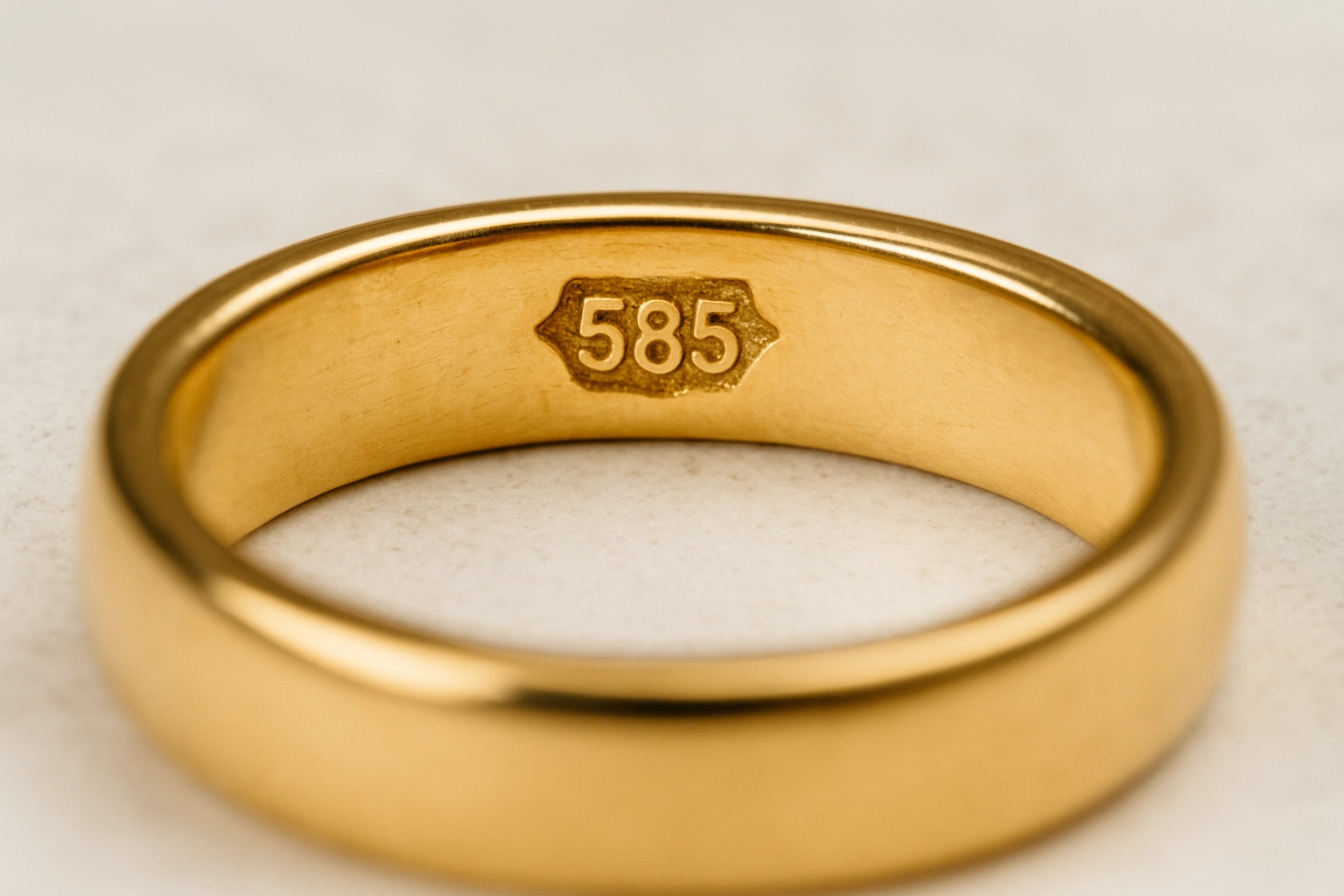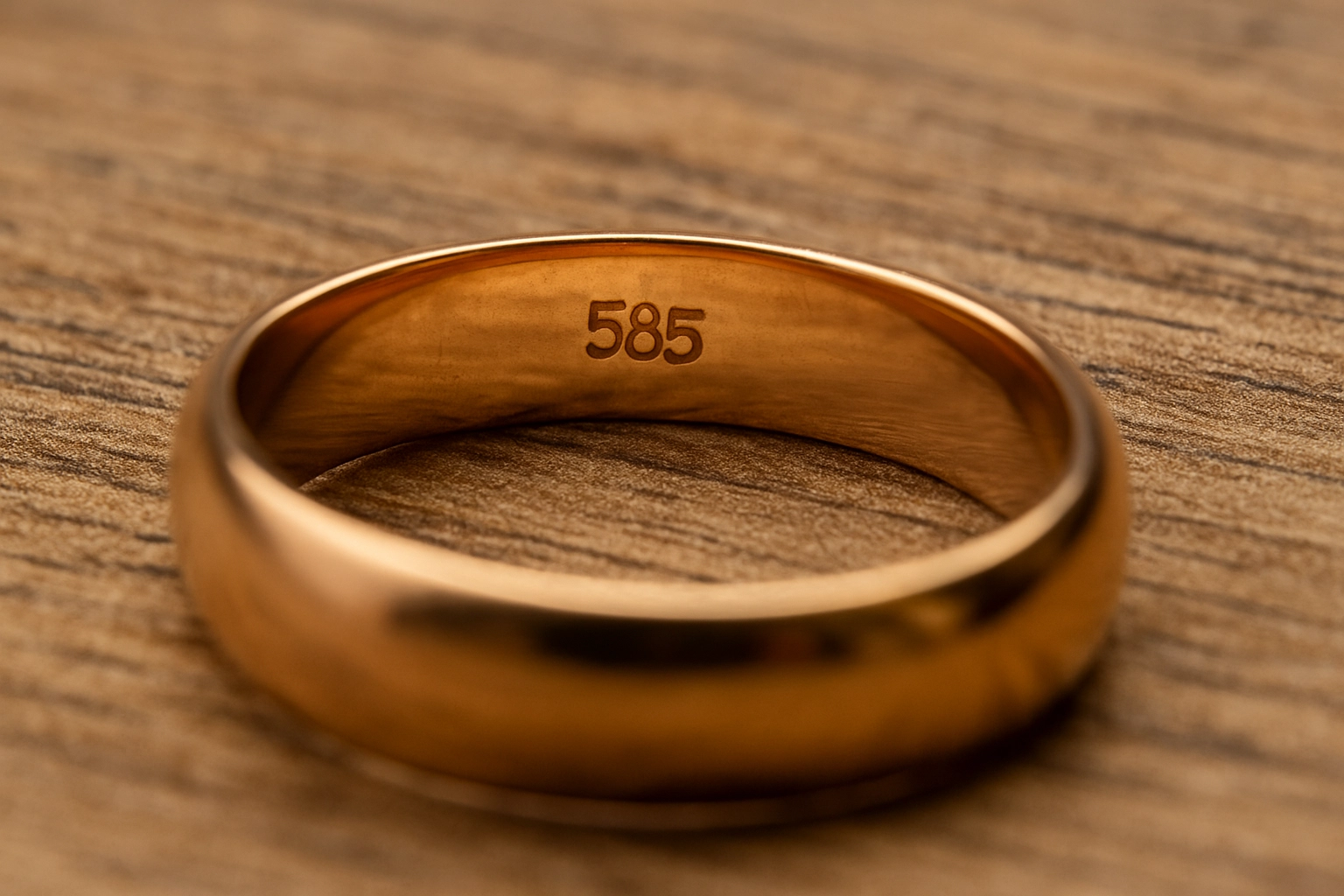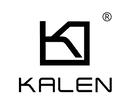
Blog
585 Gold Meaning: A B2B Guide to 14‑Karat Supply, Pricing, and Compliance

In many major jewelry markets—especially the United States and Europe—14‑karat gold accounts for roughly 80 % of retail gold jewelry sales. The alloy’s most common hallmark is 585, yet confusion persists among buyers and new private‑label brands. If you’ve ever asked “what does 585 mean on jewelry?”, this in‑depth guide explains the metallurgy, regulatory standards, and commercial implications every bulk purchaser should know.
1. 585 Gold Meaning—The Technical Definition
| Marking | Gold Purity | Karat Value | Typical Alloy Mix* | Density (g/cm³) |
|---|---|---|---|---|
| 999 | 99.9 % | 24 K | — (pure) | 19.3 |
| 585 | 58.5 % | 14 K | 58.5 % Au · 23 % Cu · 9 % Ag · 9.5 % Zn* | 13.0–13.5 |
| 750 | 75.0 % | 18 K | 75 % Au balanced with Ag/Cu | 15.6 |
| 375 | 37.5 % | 9 K | 37.5 % Au with Cu/Zn/Ni | 11.5–12.0 |
*Alloy percentages vary by color target (yellow, white, rose) and regional nickel limits.
585 gold meaning: the piece contains 585 parts pure gold per thousand—equal to 14‑karat. The remaining 415 parts are alloy metals that influence color, hardness, and casting fluidity.

2. Why 585 Gold Dominates the Mid‑Market
-
Cost Efficiency
- 585 alloy reduces raw‑gold usage by 41 % versus 18 K, shaving \~\$16.50 off material cost per 5 g ring at today’s spot prices.
- Lower melt loss during casting (\~1.4 % vs 2 % for 750), saving scrap and refining fees.
-
Mechanical Strength
- Vickers hardness \~150 HV—about 35 % stronger than 18 K—ideal for prong‑set stones in mass‑market lines.
-
Color Versatility
- Minor tweaks in copper/silver ratios yield yellow, rose, or green shades without exotic alloying additions.
-
Regulatory Sweet Spot
- Meets minimum “gold” definition under US FTC rules and most EU hallmark regimes, yet avoids the nickel‑allergy issues often seen in lower‑karat white alloys.
3. Hallmark Compliance: What Does 585 Mean on Jewelry in Different Regions?
| Region | Accepted Markings | Assay Requirement | Notes |
|---|---|---|---|
| United States | 585, 14K | Manufacturer self‑certifies | FTC mandates disclosure if below 10 K. |
| European Union | 585 + Assay Mark | Third‑party assay offices | Common control mark “scales in an oval.” |
| Gulf States | 585 in Arabic/Lat. | Government assay before sale | Fines for under‑karat items. |
| China | “Au 585” (GB 11887) | Random market sampling | Must state weight and purity on tag. |
Bulk buyers should request assay certificates or mill‑certs for each shipment to avoid seizure at customs and downstream brand‑reputation damage.
4. Alloy Options and Nickel‑Compliance Checklist
| Color Target | Cu % | Ag % | Zn % | Ni % | EU Nickel Directive (Pass/Fail) |
|---|---|---|---|---|---|
| Yellow | 23 | 9 | 9.5 | 0 | ✔ Pass |
| Rose | 32 | 5 | 4.5 | 0 | ✔ Pass |
| White (Classic) | 10 | 15 | 14 | 6 | ✖ Fail (use palladium instead) |
| White (Pd) | 10 | 10 | 9 | 0 Pd 5 | ✔ Pass |
Action point: Specify nickel‑free 585 white gold (palladium‑based) for EU retail chains to prevent allergen recalls.

5. 585 vs 750 vs Gold‑Filled: Cost‑of‑Goods Impact
| Scenario (5 g Ring, Q3 2025 Spot at \$63/g) | 585 Gold | 750 Gold | Gold‑Filled (5% Au)** |
|---|---|---|---|
| Gold Content (g) | 2.925 | 3.75 | 0.25 |
| Gold Raw Cost | \$184 | \$236 | \$16 |
| Alloy + Fabrication | \$28 | \$30 | \$40 |
| COGS Estimate | \$212 | \$266 | \$56 |
**Gold‑filled uses base metal core; plating is thicker than standard electroplate but still < 10 % purity by mass.
6. Manufacturing Tips for 585 Gold at Scale
- Induction Melting with Nitrogen Blanket – minimizes porosity for large tree casts.
- Vacuum Pressure Casting – boosts fill in intricate mold cavities.
- Tumble Burnishing – reduces finishing labor by \~25 % compared with tripoli rouge on mid‑karat alloys.
- XRF Lot Scanning – verify each ingot’s purity before rolling sheet or wire; catch off‑spec melts early.
Kalen’s in‑house refinery recycles sprues and scrap, returning credit on the next invoice—freeing 2–3 % working capital for clients.
7. Market Outlook & Hedging Strategy
- Price Volatility: 14 K margins track gold spot but with a dampening factor of 0.585. Buyers hedge with futures or pool accounts on only the pure‑gold portion, lowering hedge costs \~42 %.
- Consumer Trends: Google search interest for “14K gold ring” rose 18 % YoY, while “18K” stayed flat—evidence of mid‑karat appeal post‑inflation.
- Recycling Premium: Secondary 585 scrap trades at \~96 % of melt vs 99 % for 24 K; plan buyback programs to recapture value.

Conclusion
Understanding 585 gold meaning and knowing what does 585 mean on jewelry equips wholesalers to balance luxury perception with manageable material costs. From compliance nuances to alloy engineering, 14‑karat gold offers a sweet spot for durability, color flexibility, and price stability. Partnering with an experienced, SEDEX‑audited manufacturer like Kalen ensures your 585‑stamped pieces meet global standards while maximizing profit margins.
